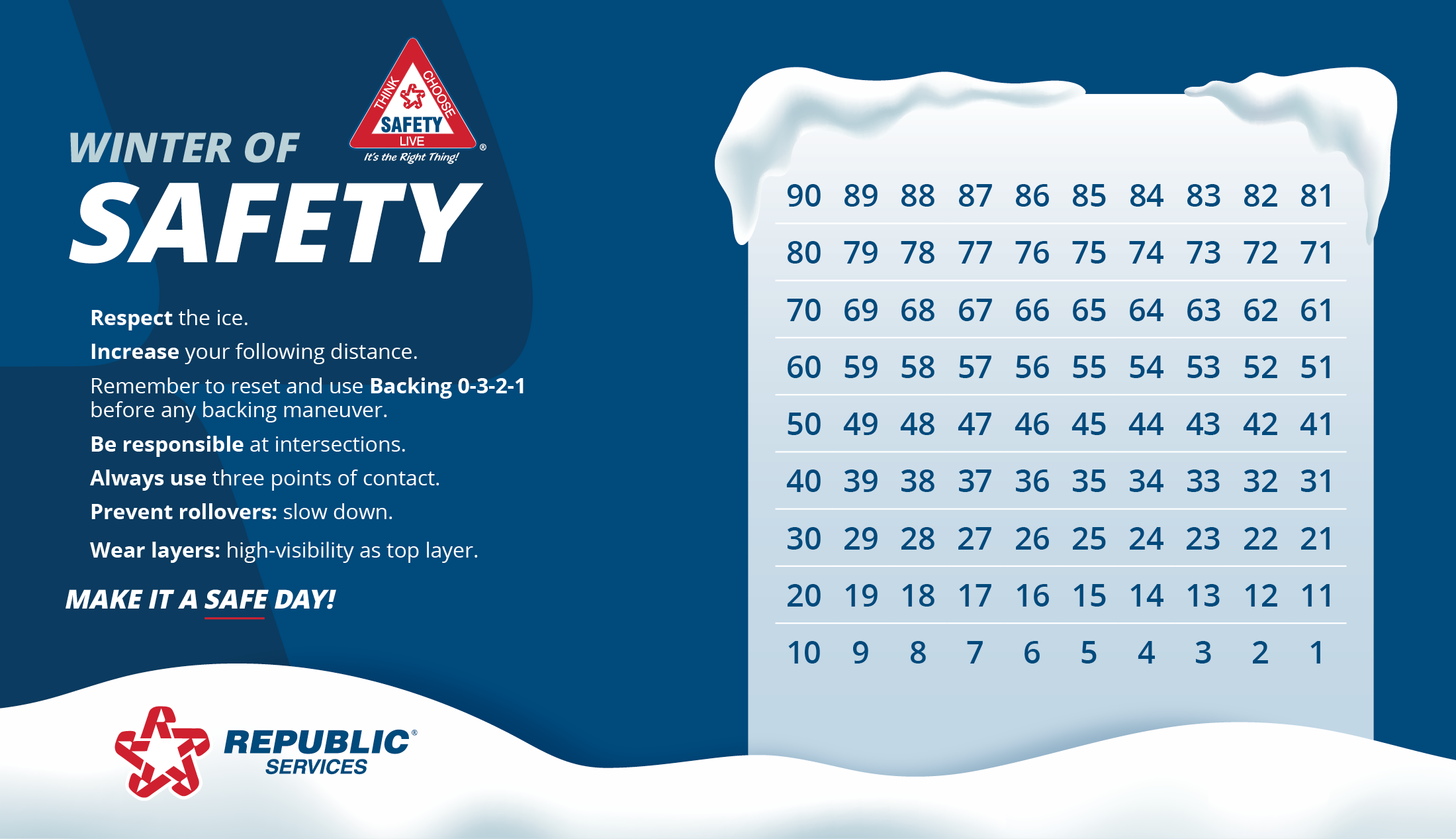Safe is our top priority and should be a part of everything we do every day. Winter weather affects millions of people across the United States and Canada and can expose those working outdoors to cold stress including frostbite and hypothermia. This winter season, be prepared to work safely in cold weather by knowing the signs of cold stress and how to respond if an emergency occurs.
| Condition | Signs | What to Do |
|---|---|---|
| Frostbite causes loss of feeling and color around the face, fingers, and toes. Areas most prone to frostbite are uncovered skin and extremities such as the hands and feet. | Numbness White or grayish-yellow skin Firm or waxy skin |
Go to a warm room. Soak in warm water. Use body heat to warm. Do not massage or use a heating pad. |
| Hypothermia happens when the body loses heat faster than it can produce it. A temperature below 95 degrees is an emergency. | Shivering Exhaustion and Confusion Fumbling hands and Memory loss Slurred speech or drowsiness |
Go to a warm room. Remove any wet clothing and warm the center of the body first—chest, neck, head, and groin. Keep dry and wrapped up in warm blankets, including the head and neck. |


